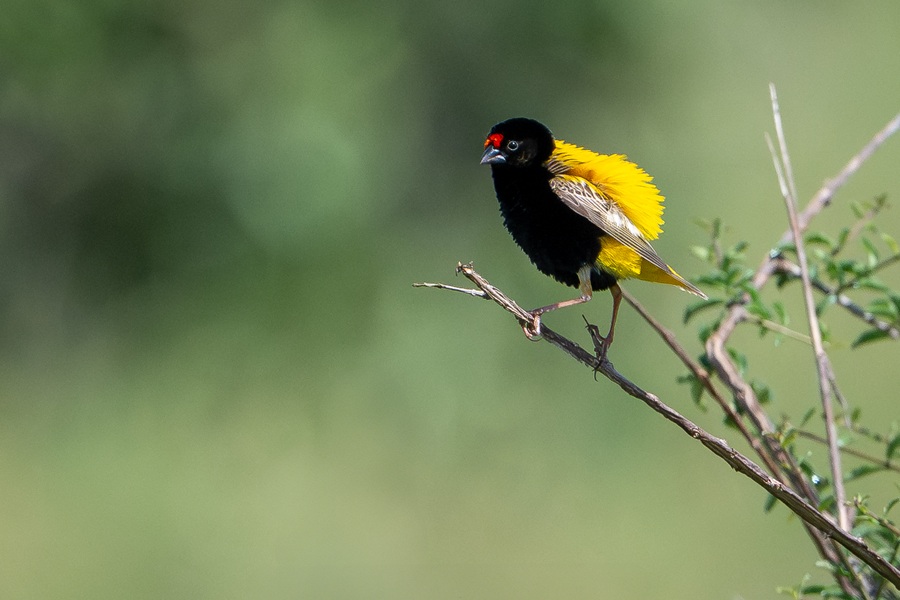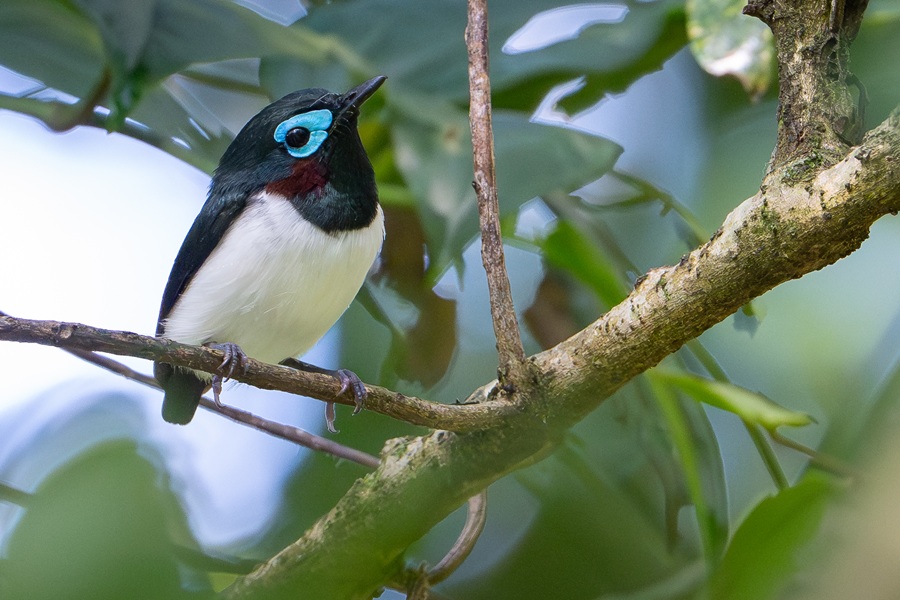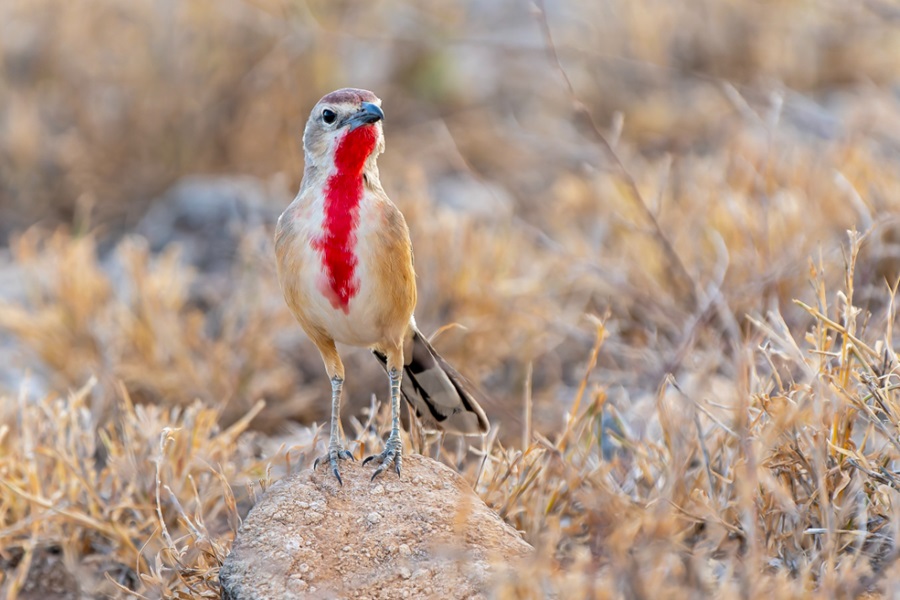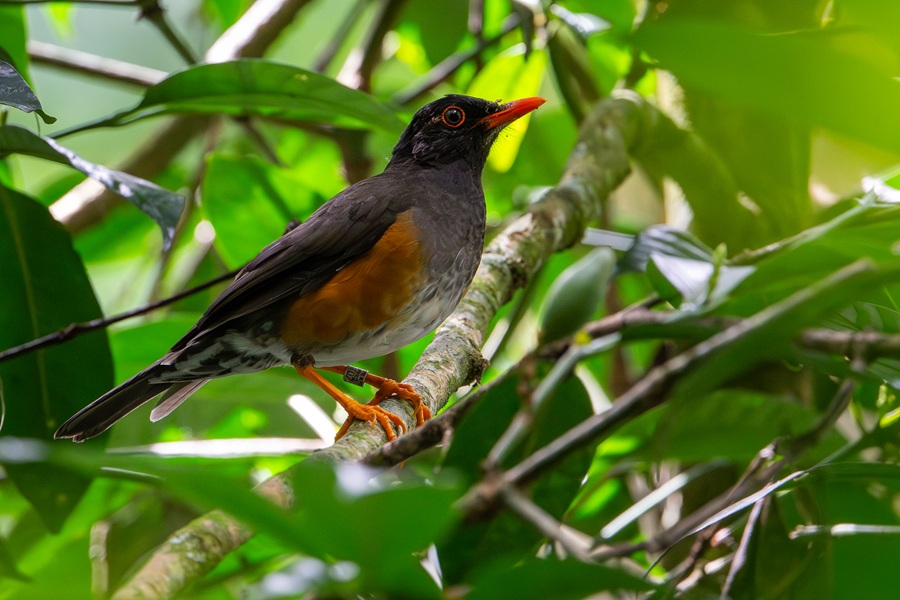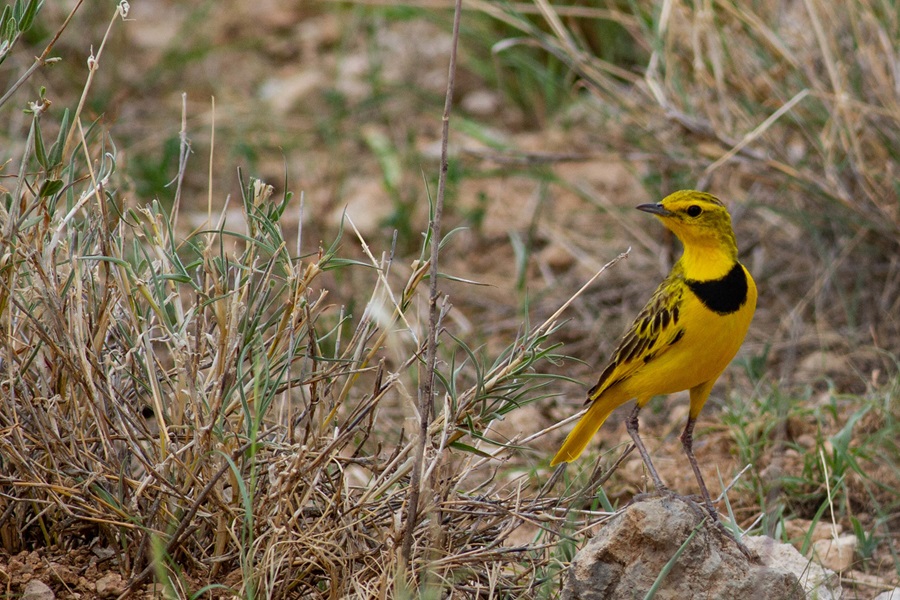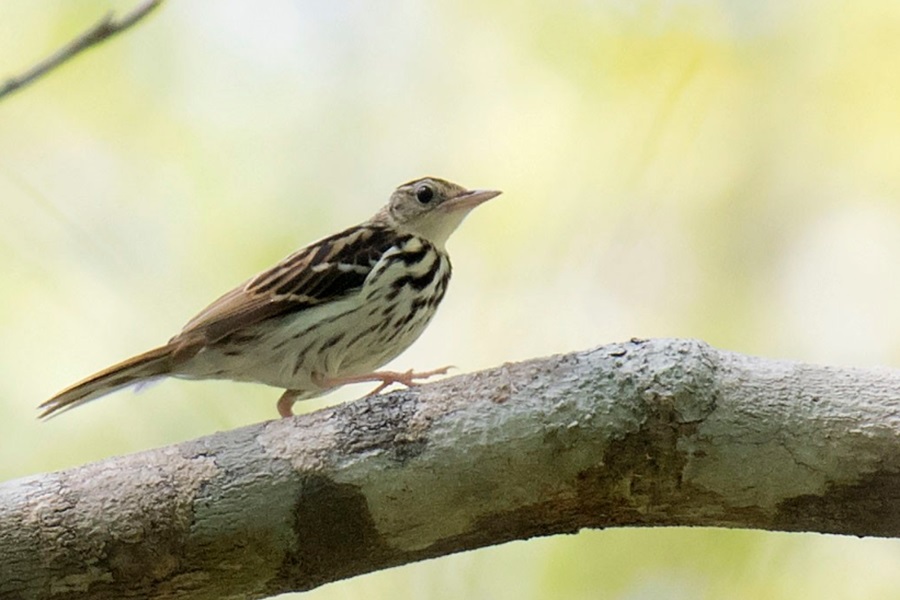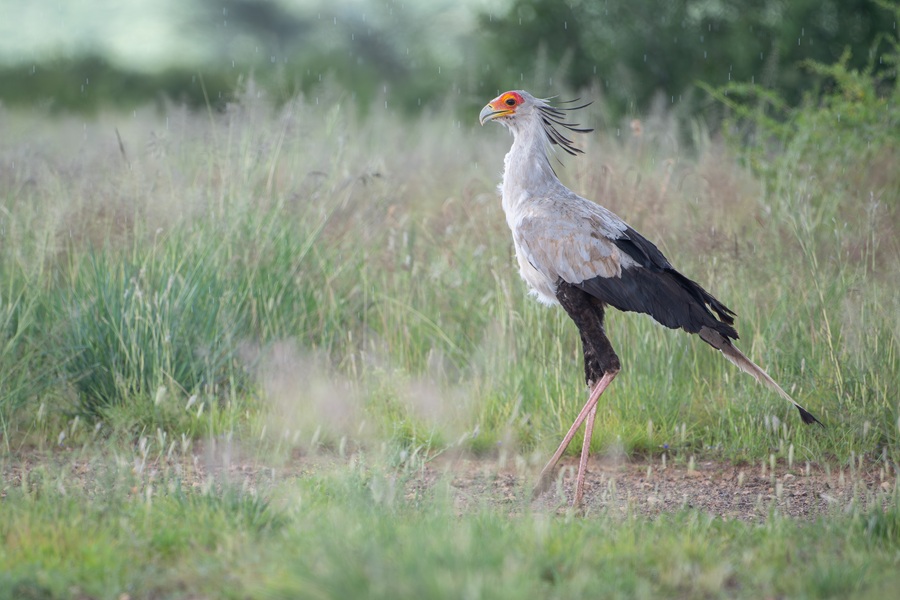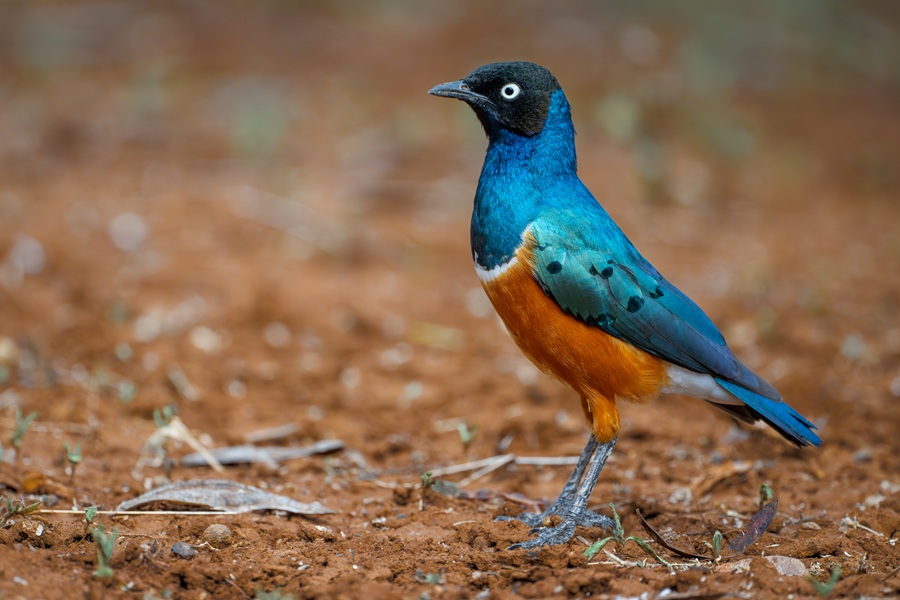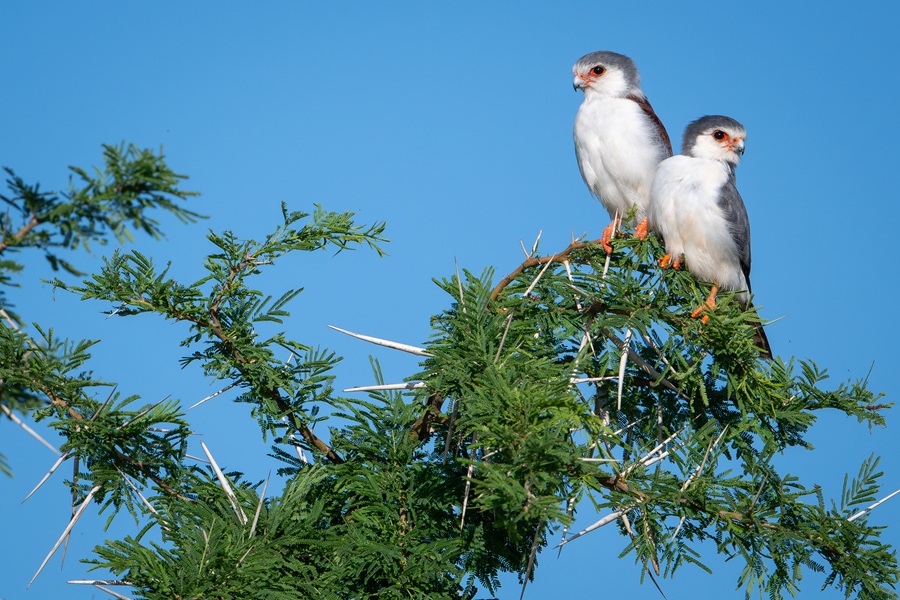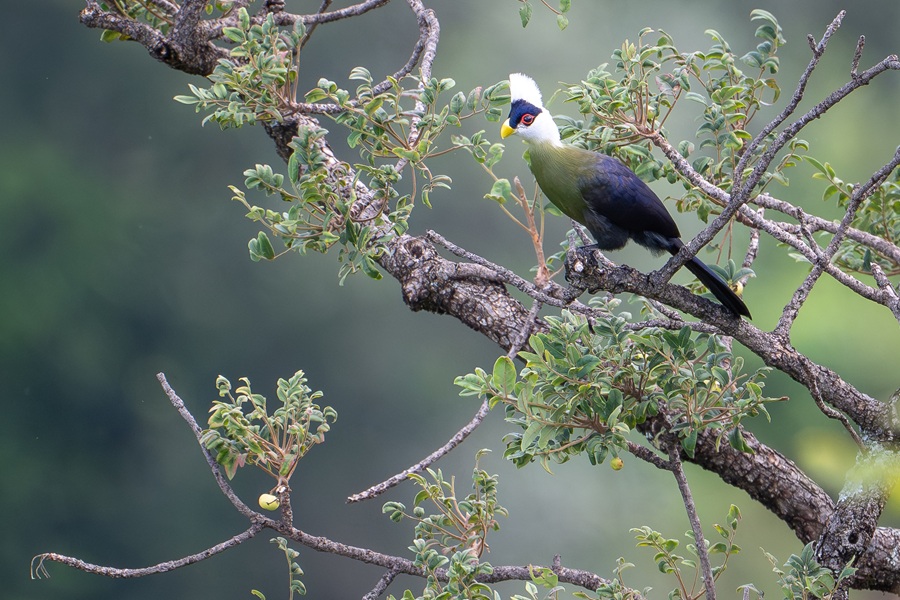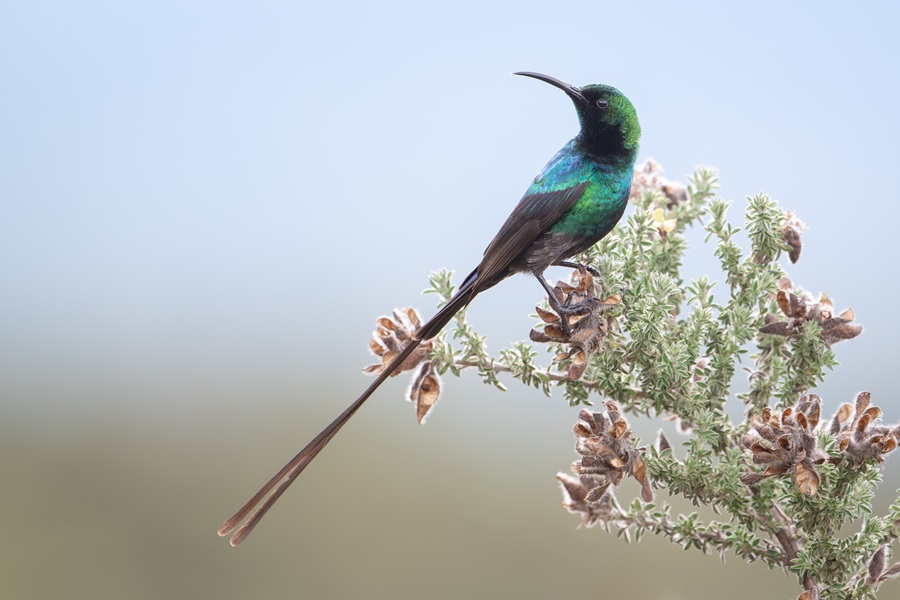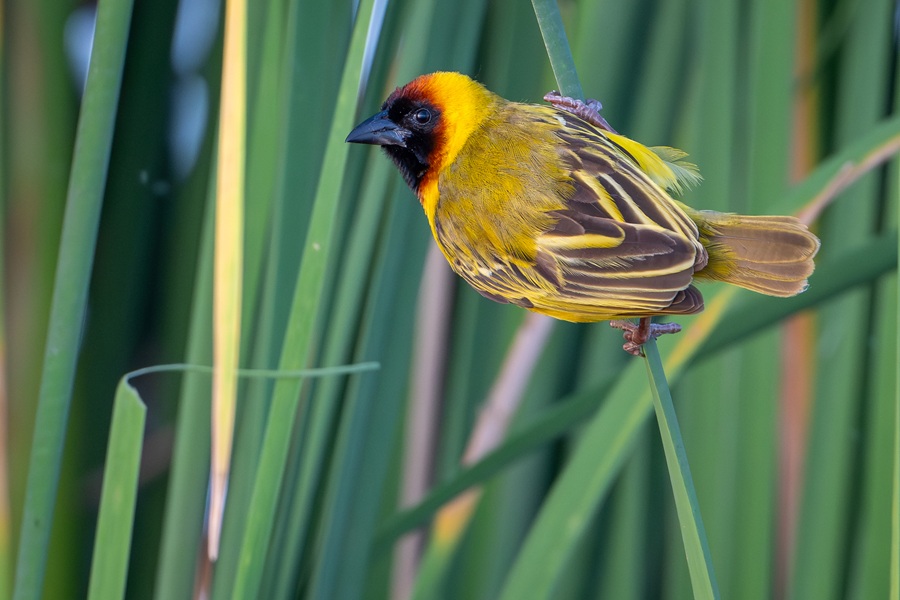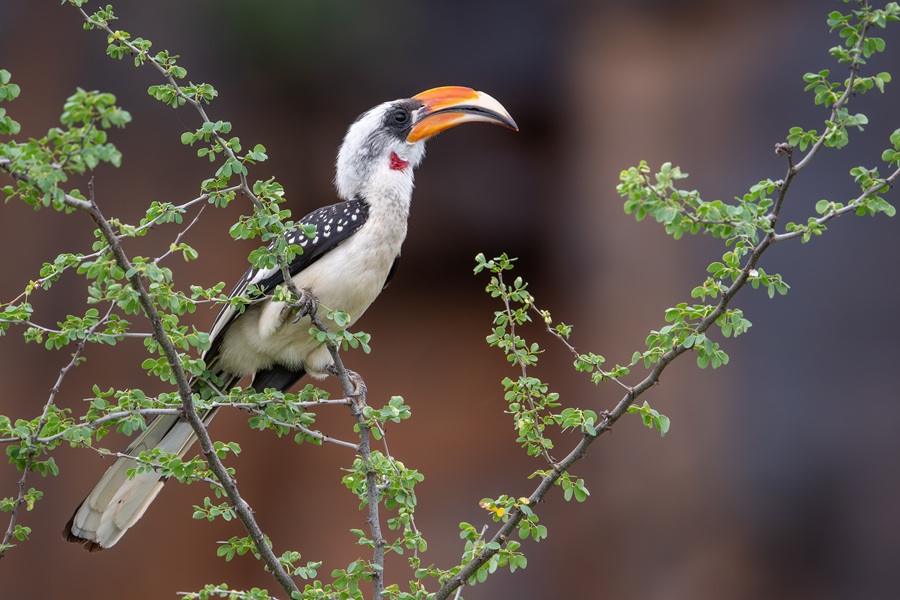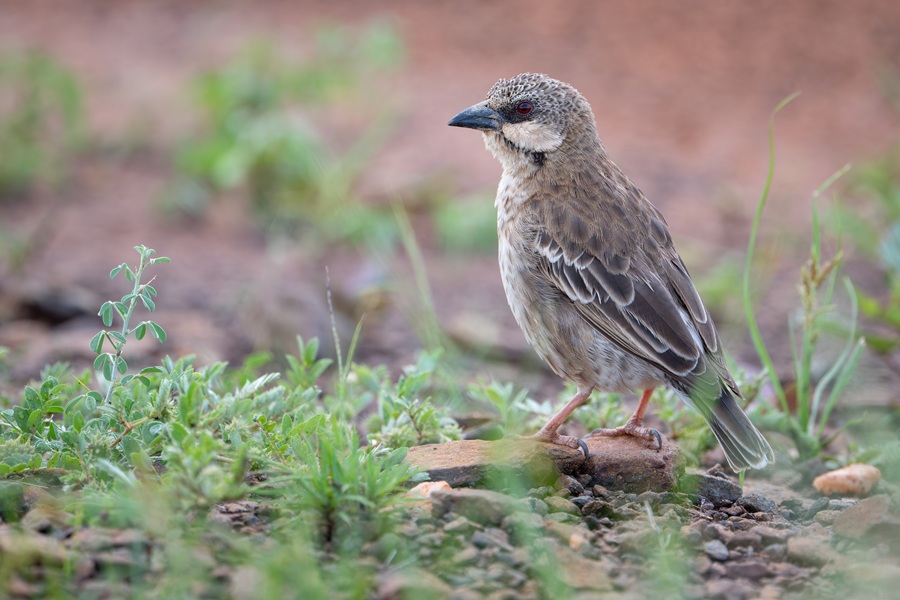Kenya
Not your average safari in dried-up grasslands, this highly-targeted trip during the onset of the monsoon coincides with peak bird activity and beautiful plumages! We focus on all ~60 of the important endemic and near-endemic birds of Kenya (which are rarely seen in other countries) on a pleasingly short itinerary reducing overlap with adjacent regions. Our small group will travel in a specialised 4WD with pop-up roof hatch for optimal viewing in some wonderfully bird-filled habitats, including the fantastic Tsavo, Samburu, and Shaba Nature Reserves. From Black Boubou and Taita Thrush to Elgon Francolin and the monotypic Grey-chested Babbler. Stunning birds like Vulturine Guineafowl, Blue-headed Bee-eater, Golden-breasted Starling, Rosy-patched Bushshrike, and Fire-fronted Bishop round out this comprehensive trip.
Next Dates
26 April - 12 May 2027 (17 days)
Leaders:
Chris Venetz
Group Size Limit:
6
Single Room Supplement: $
600 USD
Deposit: $
750 USD
Price: $
8400 USD
Add a Title
Leaders:
Chris Venetz
Group Size Limit:
Add a Title
Single Room Supplement: $
TBD
Deposit: $
TBD
Price: $
TBD
Add a Title
26 April - 12 May 2028 (17 days)
Leaders:
Joachim Bertrands
Group Size Limit:
6
Single Room Supplement: $
700 USD
Deposit: $
750 USD
Price: $
8800 USD
Add a Title
Leaders:
Joachim Bertrands
Group Size Limit:
Add a Title
Single Room Supplement: $
TBD
Deposit: $
TBD
Price: $
TBD
Add a Title
Our itinerary in Kenya thoroughly covers all the key specialties, avoiding unecessary overlap with Ethiopia and Tanzania. We have also built in extra time at the most enjoyable birding areas, and are running the tour right at the onset of the monsoon so that everything will be responsive and in beautiful breeding plumage.
Accommodation:
All comfortable hotels, a few exceptional lodges.
Walking difficulty:
Mostly easy car-based roadside birding and a few easy walks.
Tour cost includes:
All accommodation, main meals, drinking water, internal flights (as stated in itinerary), overland transport, tips to local drivers and guides, travel permits, entrance fees, and guide fees.
Tour cost excludes:
Flights before and after the tour start/end, visa, travel insurance, tips to tour leaders, laundry, drinks, and other items of a personal nature.


Day 1: Morning arrivals into Nairobi’s Jomo Kenyatta International Airport (NBO), from which we will take an afternoon flight to Manda Island. We should pin down the near-endemic Coastal Boubou straight away, along with Zanzibar Boubou, Eastern Black-headed Batis, Bare-eyed Thrush, Scaly Babbler, Three-streaked Tchagra, Spotted Palm Thrush, Dodson’s Bulbul, Coastal Cisticola, the electric Golden Palm Weaver, and stunning Zanzibar Red Bishop. As we take the short boat crossing to our hotel, we expect to see Sooty Gull, and we might be able to find Mangrove Kingfisher somewhere. Night in Lamu.
Day 2: Early morning birding on Manda Island again before heading south to Watamu, where we will be staying for the next three nights. Night in Watamu.
NOTE: We fly from Manda to Watamu, since driving the coastal road is considered dangerous and there have been recent security incidents. This means we are unlikely to see Violet-breasted Sunbird.
Day 3-4: Arabuko-Sokoke Forest will be our first port of call as we search for the near-endemic Sokoke Pipit and Sokoke Scops Owl, while the late timing of our tour will give us the best possible chance to find the elusive endemic Kilifi Weaver. Other main targets include Fischer’s Turaco, East Coast Akalat, Amani Sunbird, Mombasa Woodpecker, Little Yellow Flycatcher, Forest Batis, Chestnut-fronted Helmetshrike, and Plain-backed Sunbird. There is also a very good chance to see the Critically Endangered Golden-rumped Sengi here.
Other specialties in the area include Eastern Crested Guineafowl, Lowland Tiny Greenbul, Fischer’s Greenbul, Pallid Honeyguide, Black-headed Apalis, Pale Batis, and Malindi Pipit, these being standouts amongst a number of more widespread coastal birds distributed down to Mozambique. Around a river estuary near town we will easily see dozens of the monotypic Crab-plover on a suitable rising tide during our stay. The rare Forbes-Watson’s Swift is also known from here but only gets recorded a few times each year. Nights in Watamu.
Day 5: This morning we will drive inland to Tsavo East National Park, watching the sides of the road for magnificent birds like Golden-breasted Starling, and Golden Pipit along the way. As we approach the park entrance some truly fabulous birding begins, and with the onset of early-May rains it is a particularly good place to come across flocks of stunning Fire-fronted Bishop, while other birds could include Heuglin’s Bustard, Somali Courser, Somali Bee-eater, Rosy-patched Bushshrike, Pangani Longclaw, Pink-breasted Lark, Red-winged Lark, and Chestnut-headed Sparrow-Lark.
There should be many roadside raptors, and we can expect a large variety of other exciting new birds here, including Buff-crested Bustard, Black-faced Sandgrouse, Von der Decken’s Hornbill, Taita Fiscal, D’Arnaud’s Barbet, Black-bellied Sunbird, Hunter’s Sunbird, Eastern Violet-backed Sunbird, Blue-naped Mousebird, Grey Wren-Warbler, Ashy Cisticola, Superb Starling, Fischer’s Starling, White-headed Buffalo-Weaver, Somali Bunting, and much more! Night in Tsavo East National Park.
Day 6: We will spend the morning exploring different sections of Tsavo for the hardest specialties, focusing on any areas which have received recent rainfall to maximise our chances for the aforementioned birds, plus rarities like Hartlaub’s Bustard and the erratic Friedmann’s Lark. We should also see some of the famous “Tsavo Red” African Elephants before continuing to our hotel at the base of the Taita Hills, arriving in time for a first run at the forest this afternoon.
Day 7: Near the top of the Taita Hills, we will be focused on finding several of the rarest birds in Africa utilising small tracts of remaining forest. These are the Critically Endangered endemics Taita Thrush and Taita Apalis, plus the more common but still threatened Taita White-eye (which is perhaps the most impressive of the trio sporting a truly enormous orbital ring). Other interesting species might include Spot-flanked Barbet, Brown-breasted Barbet, Usambara Double-collared Sunbird, Striped Pipit, Stripe-faced Greenbul, Placid Greenbul, Yellow-throated Woodland Warbler, and Evergreen Forest Warbler. Night near Taita Hills.
Day 8: Today we take a long drive north to the southern slopes of Mount Kenya, but several targeted stops in the morning could produce Tsavo Sunbird, Black-throated Barbet, Scaly Chatterer, Red-naped Bushshrike, Blue-capped Cordonbleu, and the stunning Straw-tailed Whydah in breeding plumage! Night at Castle Forest Lodge.
Day 9: This morning we aim to see the secretive Olive Ibis perform their routine flyby (and occasional perch) at the lodge. Afterwards we will focus on finding the little-known Abbott’s Starling in wonderful highland forest, though it is always unpredictable. During the rest of the day several specialties will be searched out, like the endemic Kikuyu White-eye, range-restricted Hartlaub’s Turaco, Scarce Swift, White-browed Crombec, and Kikiyu Mountain Greenbul.
Other birds might include Red-fronted Parrot, White-headed Woodhoopoe, Cinnamon-chested Bee-eater, Moustached Tinkerbird, Fine-banded Woodpecker, Brown Woodland Warbler, Waller’s Starling, Abyssinian Ground Thrush, Mountain Oriole, Tacazze Sunbird, Eastern Double-collared Sunbird, Northern Double-collared Sunbird, Hunter’s Cisticola, Chestnut-throated Apalis, Black-collared Apalis, Grey Apalis, Brown-capped Weaver, Thick-billed Seedeater, and Kandt’s Waxbill, though there are again many more widespread African birds in this area which we will also bump into! Night at Castle Forest Lodge.
Day 10: Our focus as we head around the west flank of Mount Kenya this morning will be on the declining endemic Hinde’s Babbler (which these days may require several stops before we are successful), along with chances for Northern Pied Babbler, African Citril, Sentinel Lark, Kenya Rufous Sparrow, and Speke’s Weaver. The spectacular Red-cowled Widowbird and Long-tailed Widowbird should be easier as we continue north through lush grasslands, our eyes peeled for the near-endemic Jackson’s Widowbird. All of these will be in full breeding plumage and maybe performing display flights by the roadside! After one last stop for the range-restricted Boran Cisticola and perhaps the scarce Stripe-breasted Seedeater, we’ll arrive at our comfortable lodge on the banks of the Uaso Nyiro River this afternoon. Night in Shaba.
Day 11-12: Exploring Shaba and some of the adjacent reserves will surely be highlighted by regular sightings of both Somali Ostrich and the wonderful Vulturine Guineafowl! Our main target is the endemic William’s Lark (a specialised inhabitant of ancient rocky lava-strewn plains), and we will have another chance for Friedmann’s Lark plus possibly Masked Lark if the rains have hit this region (though these latter two can’t be guaranteed every year). Several localised specialties occur, including Magpie Starling, Donaldson Smith’s Sparrow-Weaver, and White-headed Mousebird.
Other possibilities include Lichtenstein’s Sandgrouse, Red-bellied Parrot, Red-and-yellow Barbet, Violet Woodhoopoe, Fischer’s Sparrow-Lark, Pygmy Batis, Banded Parisoma, Pringle’s Puffback, Black-capped Social Weaver, White-bellied Canary, and perhaps the scarce Steel-blue Whydah, amongst several other Horn of Africa endemics shared with Ethiopia. We will be on the lookout for any Critically Endangered Rüppell’s Vulture, while Pygmy Falcon and Secretarybird are very common here. On the mammal front, we can expect to see Grevy’s Zebra (the most threatened of the three extant Zebra species), Gerenuk, Beisa Oryx, Reticulated Giraffe, and hopefully Cheetah. Night in Shaba.
Day 13: Leaving at dawn, we’ll drive to the remote northern portion of the Aberdare Range, via quick stops for Cape Eagle Owl and the undescribed “Ethiopian Moorland Martin”. Ascending to 3000m, we should see plenty of Jackson’s Spurfowl on the road, and another exciting new addition will be the spectacular Golden-winged Sunbird. We can sometimes see Montane Nightjar around our lodge at dusk. Night in the Aberdare Range.
Day 14: At a newly-discovered site, we will search for the rare Elgon Francolin this morning in the high moorland. There is only a small chance we can bring out a Striped Flufftail, but the impressive Red-tufted Sunbird is positively common. We should also see Moorland Chat and Aberdare Cisticola before heading to Lake Baringo. Upon arrival, an afternoon walk at the cliffs will likely include the near-endemic Jackson’s Hornbill, plus range-restricted species like Hemprich’s Hornbill, Red-and-yellow Barbet, Acacia Tit, Mouse-coloured Penduline Tit, Bristle-crowned Starling, Ruppell’s Starling, Brown-tailed Rock Chat, and Abyssinian Sunbird. Our local guide usually has a few roosting nightbirds staked out too, with Three-banded Courser, Slender-tailed Nightjar, and Northern White-faced Owl all possible. Night at Lake Baringo.
Day 15: Taking a short dawn boat trip along the shore of the lake, we should see several groups of Northern Masked Weaver, the males actively maintaining their nests at this time of year alongside Golden-backed Weaver and Little Weaver. We can spend a little more time in the woodland if needed before driving further west to Kakamega Forest, which should see us spotting a few roadside Grey Crown Crane. We may also succeed in finding White-crested Turaco or Gambaga Flycatcher along the way, and we have another shot at Stripe-breasted Seedeater. Night in Kakamega Forest.
Day 16: Exploring this superb and diverse area, we will be focused on finding several specialties which are not so regular in adjacent countries: Grey-chested Babbler (a member of the restricted Modulatricidae family) is fairly common in Kakamega, as is the wonderful Blue-headed Bee-eater, along with near-endemics like Chapin’s Flycatcher, Turner’s Eremomela, Uganda Woodland Warbler, and Jameson’s Wattle-eye. While not our focus, we will inevitably run into many other more widespread birds found in the belt of forest between Uganda and Cameroon, which may include Black-and-white-casqued Hornbill, Grey-throated Barbet, Stuhlmann’s Starling, Joyful Greenbul, Toro Olive Greenbul, Kakamega Greenbul, and Black-faced Rufous Warbler. We will also put some effort in to find “Tawny-breasted” Olive-green Camaroptera and “Forest” Southern Hyliota. Night in Kakamega Forest.
Day 17: After a final morning of birding in Kakamega we will head back east towards Nairobi, making at least one stop for the range-restricted Lynes’s Cisticola. Our late afternoon in preserved tussock grassland will produce our final target, the Endangered Kenyan endemic Sharpe’s Longclaw, before the tour ends this evening with dropoffs at Nairobi International Airport (NBO). Conveniently, most flights depart between 11pm and 2am, but if required, we can help arrange accommodation near the airport for anyone who wishes to depart the following day.
NOTE: There are some near-endemic birds around Nairobi which are best targeted on our Tanzania: Northern Endemics tour, but we can certainly help arrange extensions for a few days to see some of these in Kenya. Possibilities include Hildebrandt’s Spurfowl, Yellow-throated Sandgrouse, Sombre Nightjar, Red-throated Tit, Grey-capped Social Weaver, Hildebrandt’s Starling, and Cardinal Quelea. We can also make recommendations for a visit to Masai Mara, one of Africa’s most famous national parks offering exceptional safaris with a ridiculously high density of wildlife.





